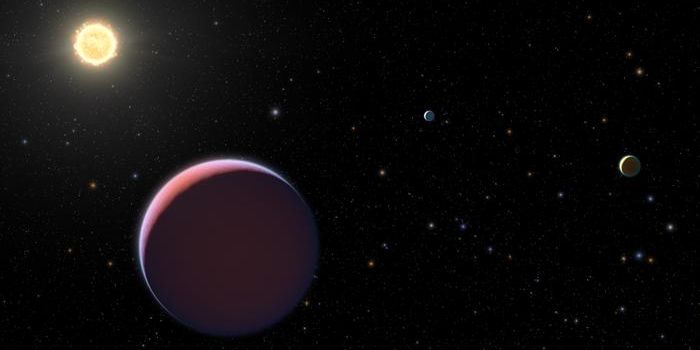Newly observed quasar jet sheds light on early galaxy formation
New observations from the National Science Foundation's Karl G. Jansky Very Large Array (VLA) and Very Long Baseline Array (VLBA) report documenting the farthest cosmic jet ever discovered. The jet – observed in a quasar 13 billion light-years from Earth – is the first to be found at such a distance and with such a strong radio emission. The findings are published in the Astrophysical Journal and the Astronomical Journal.
Quasars are tremendously luminous active galactic nuclei that harbor supermassive black holes, often much, much more massive than the sun, which are then encircled by gases. Few quasars have been documented with having cosmic jets like the one recently observed.
Why, you may be asking, should we be interested in these far-off galactic entities? The astronomers who observed the cosmic jet say that its particles appear to be only approximately 1,000 years old and that because of the quasar’s distance, we are seeing it as it was when the universe was a mere 780 million years old (a spring chicken, in universe-age!). This means that we can use these observations to garner key data about how galaxies and supermassive black holes evolved in the early universe.
"The black holes at the cores of many of these very distant quasars are so massive that they challenge our understanding of how they could have grown in the relatively short time available to them that early in the universe's history. One possibility is that jets provided a mechanism that allowed the black holes to grow more quickly. Finding a jet in a quasar at this epoch is an exciting clue about this question," noted Emmanuel Momjian, of the National Radio Astronomy Observatory (NRAO).
P172+18, as the object is called, was first seen in 2015 in observations from the Pan-STARRS sky survey using a visible-light telescope in Hawaii. Later, through infrared observations and the NRAO's FIRST survey, the team observed a radio-emitting object at the same position, which they determined were within the same object. This triangulation was key to understanding the significance of the jet’s location.
"Jets have a role in regulating star formation and the growth of their host galaxies, so this discovery is valuable to understanding these processes in the early universe," says NRAO’s Chris Carilli. "The jets at that time also propelled atoms and magnetic fields into what had been pristine space between the galaxies," he concludes.
Sources: NRAO, Eureka Alert








